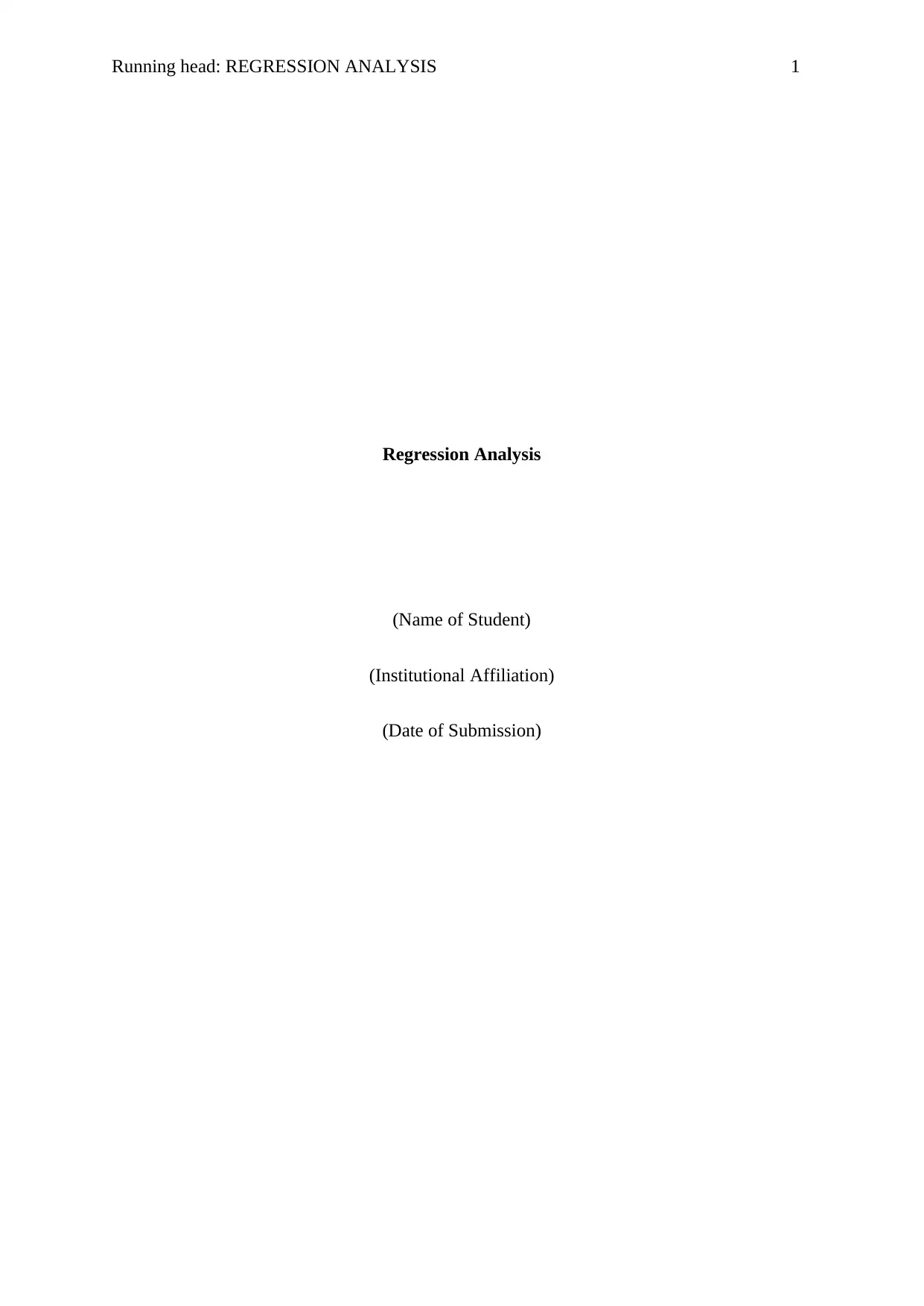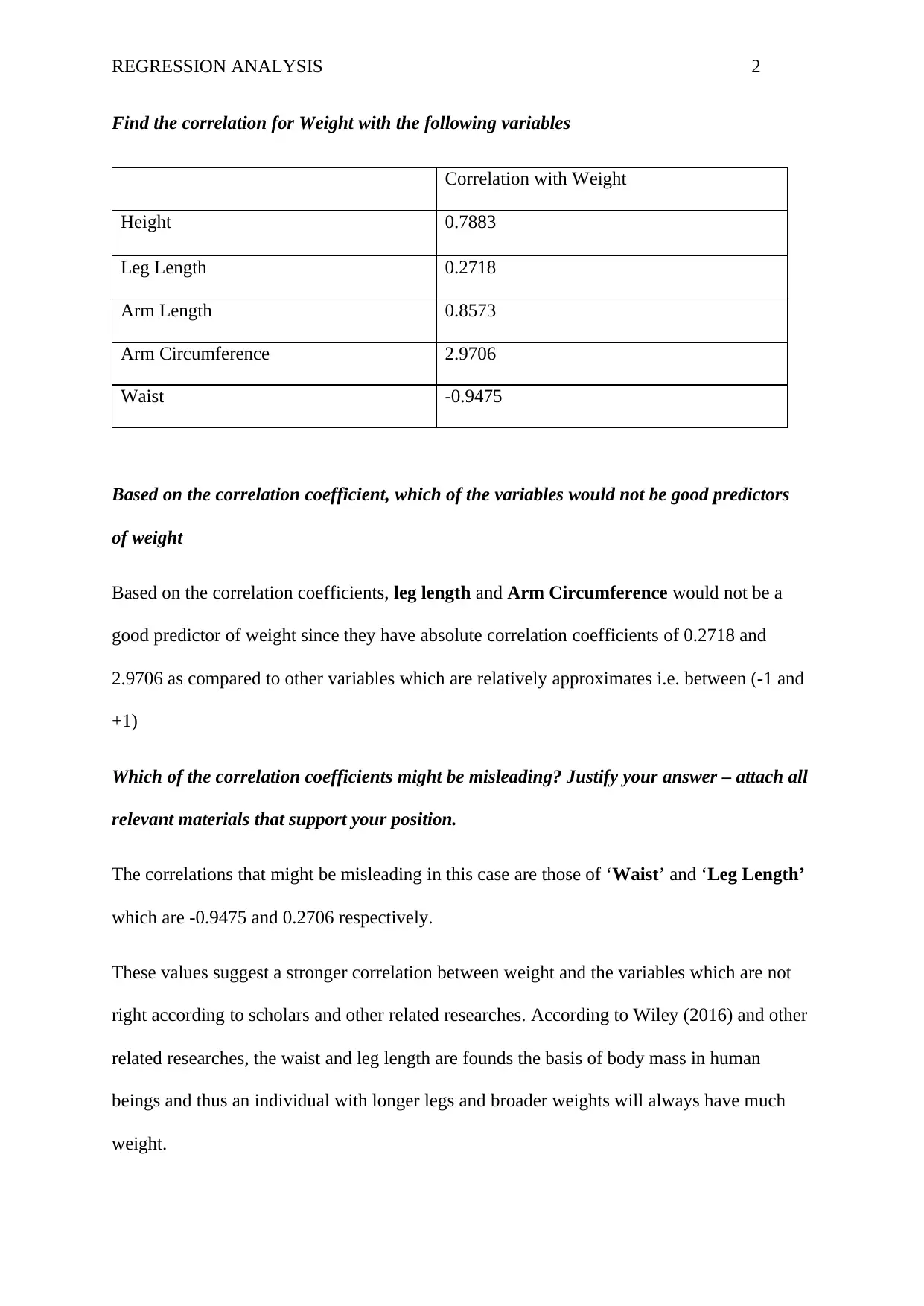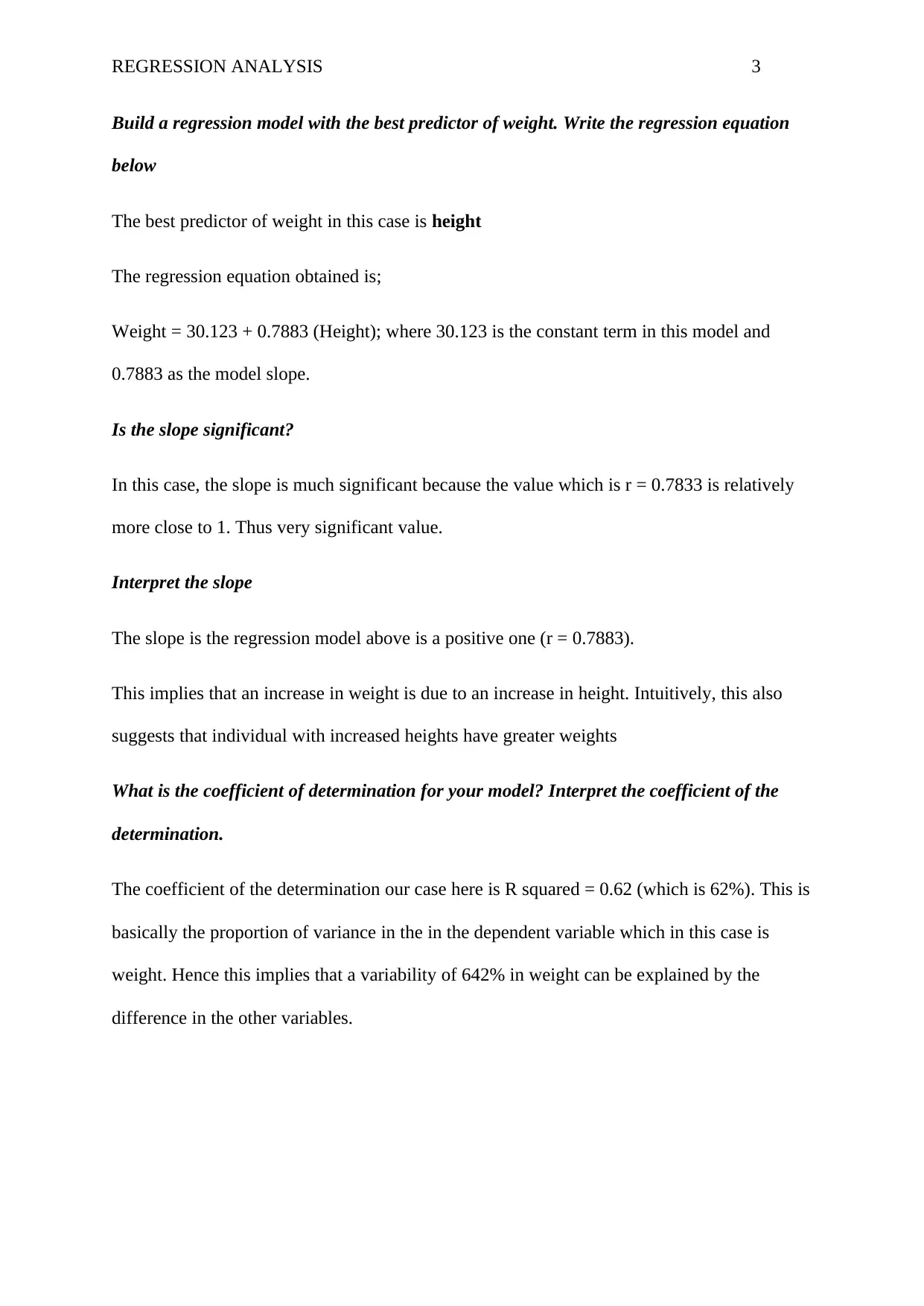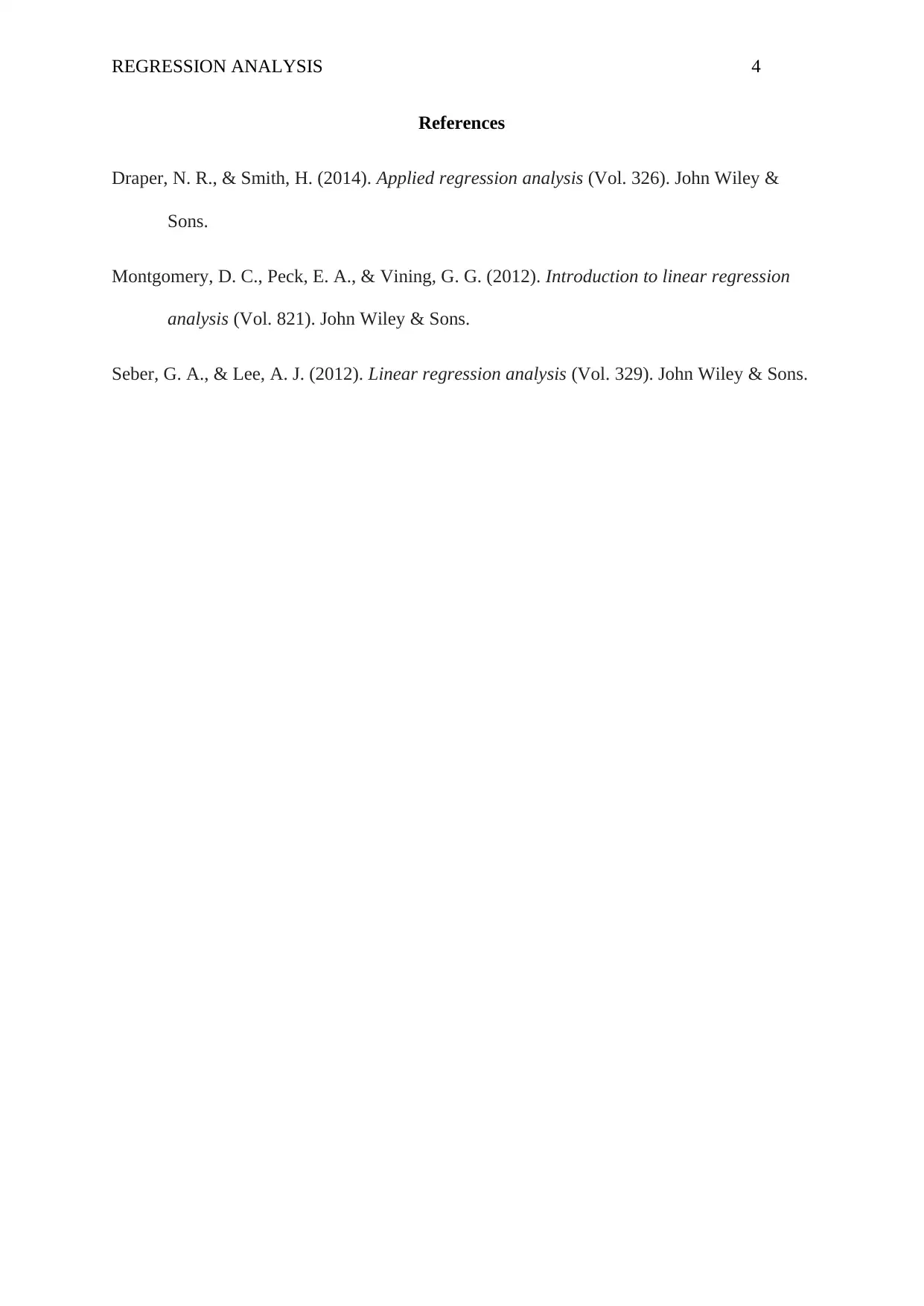Regression Analysis: Correlation, Prediction, and Model Building
VerifiedAdded on 2023/03/21
|4
|543
|80
Homework Assignment
AI Summary
This assignment focuses on regression analysis, exploring the correlation between weight and various variables like height, leg length, arm length, arm circumference, and waist. The student calculates correlation coefficients, identifies potential misleading correlations, and builds a regression model to predict weight using height as the best predictor. The assignment includes the regression equation, assesses the significance of the slope, interprets the slope's meaning, and determines the coefficient of determination, explaining its implications. The solution also provides references to relevant statistical resources, including Draper & Smith (2014), Montgomery, Peck, & Vining (2012), and Seber & Lee (2012).
1 out of 4









![[object Object]](/_next/static/media/star-bottom.7253800d.svg)